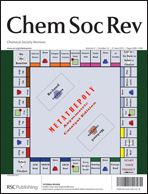Tridentate ligands and beyond in group IV metal α-olefin homo-/co-polymerization catalysis
Abstract
The opening up of new markets, particularly in the Far East, is expected to increase the industrial demand for more (and new) plastic materials. In turn, this will drive the need for further catalyst development, with increased efficiency and with the capacity to easily control the resulting polymer properties being high on the agenda. With this in mind, tailoring the pre-catalyst structure has proved to be a very successful strategy, and has allowed for the elucidation of a number of structure–activity trends. A particularly fruitful synthetic avenue has been the deployment of multi-dentate ancillary ligands bearing one or more substituents containing additional functionality, capable of weakly binding to the metal. Such a method is versatile and allows for the incorporation of a wide range of functionality. Furthermore, benefits of such an approach include the ability to control the % incorporation of co-monomers, in situ screening, low co-catalyst loadings (versus activity enhancement) as well as control over the resultant polymer structure. This review underlines the efforts made in the last few years with regard to the use of tridentate ligands and beyond in the field of α-olefin polymerization using catalytic systems based on group IV metals.


 Please wait while we load your content...
Please wait while we load your content...